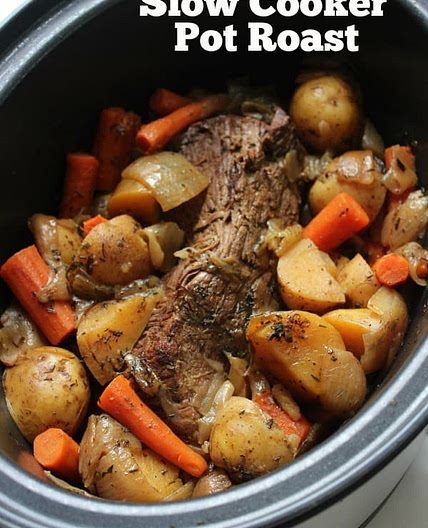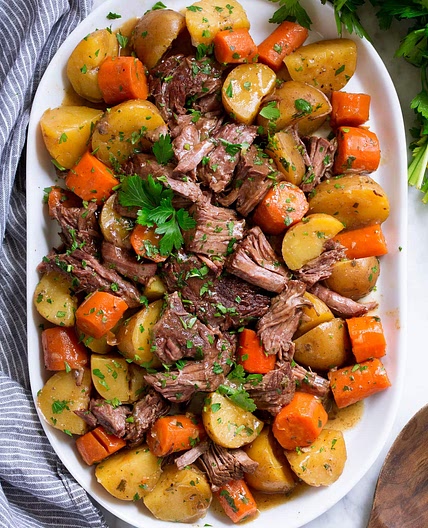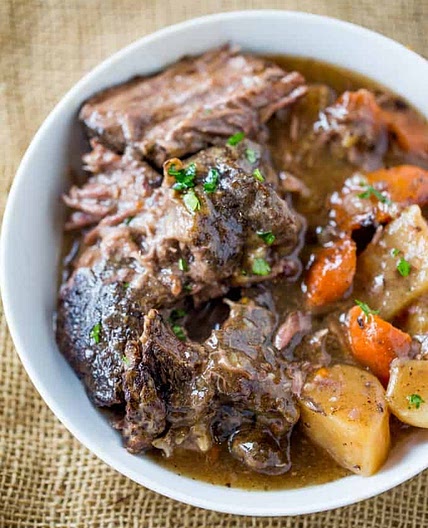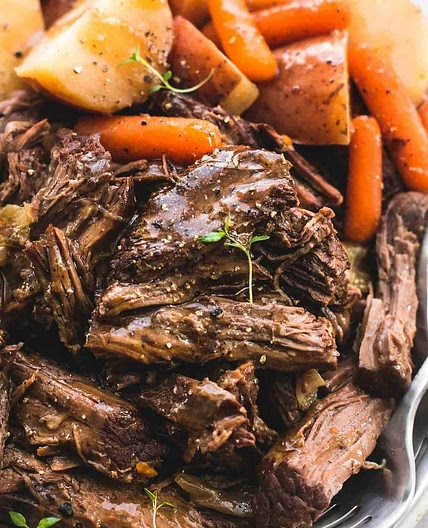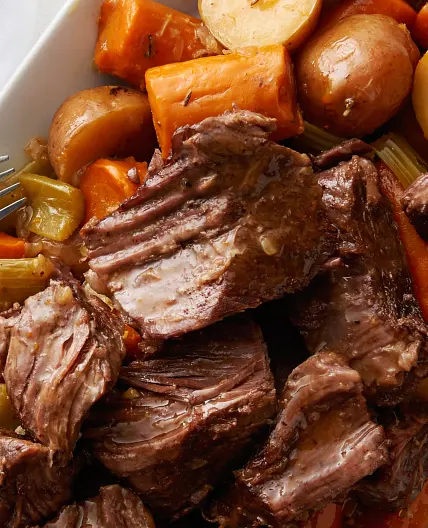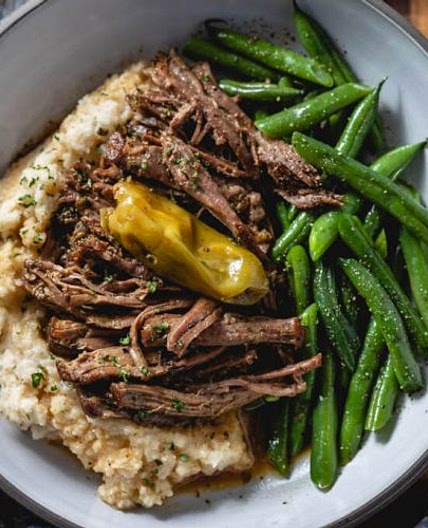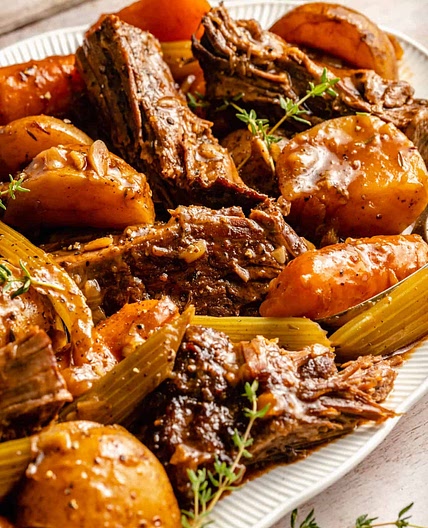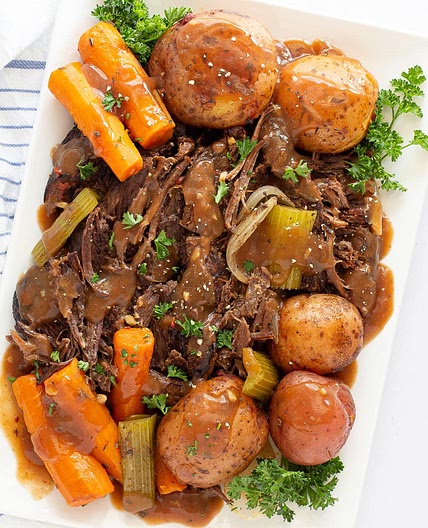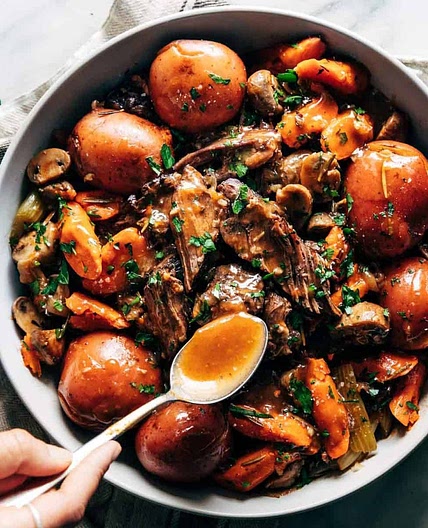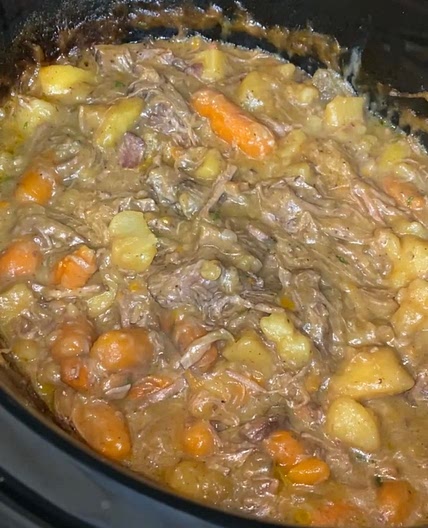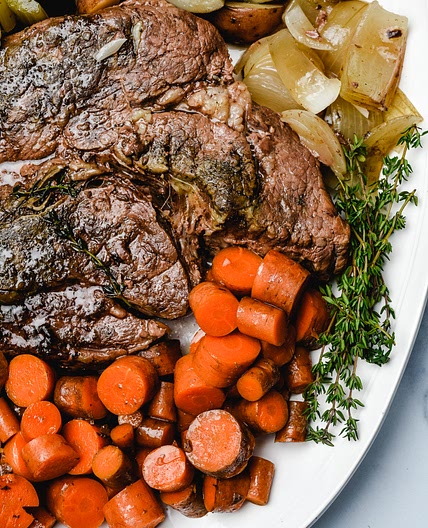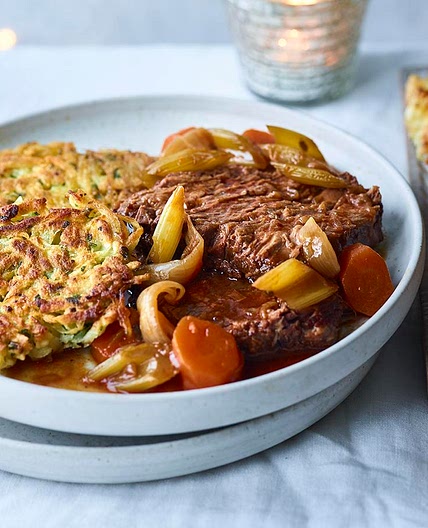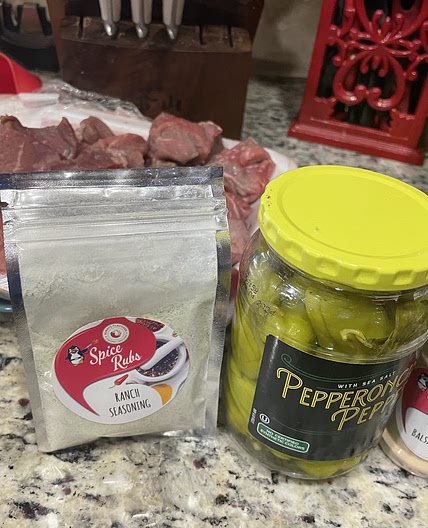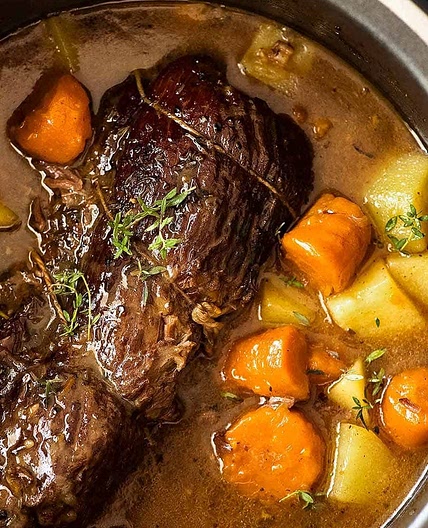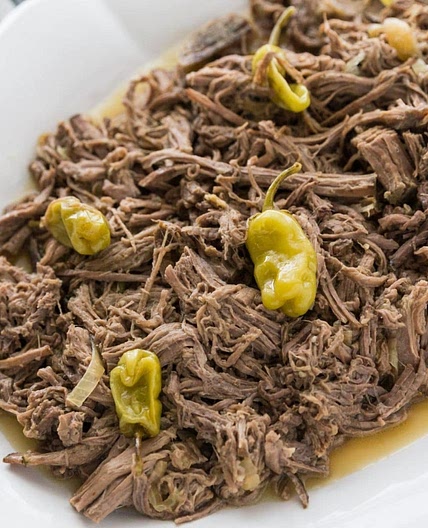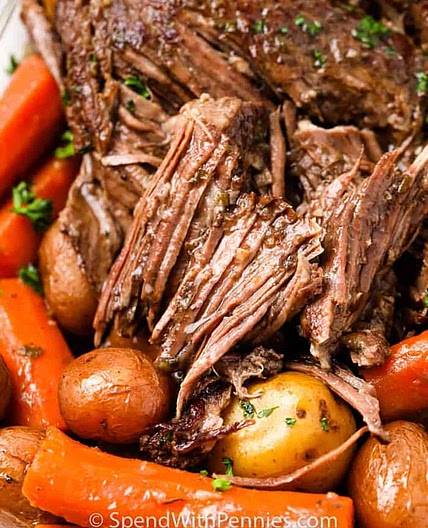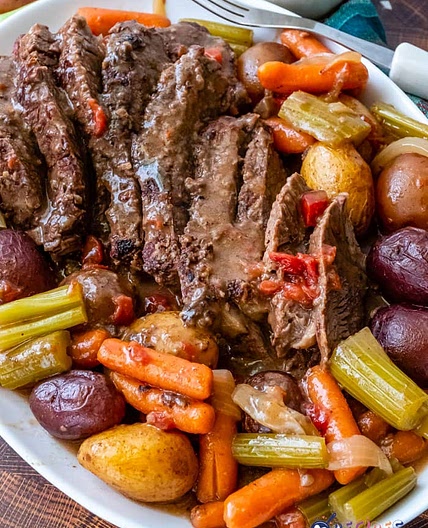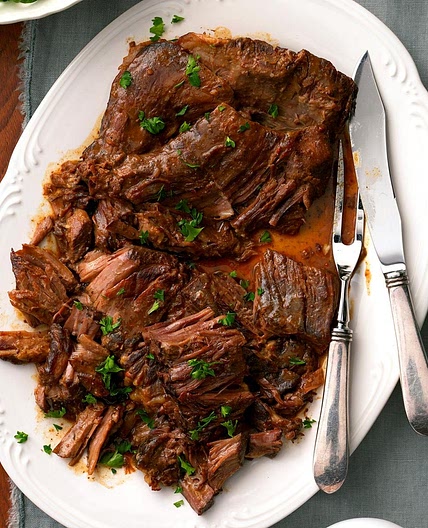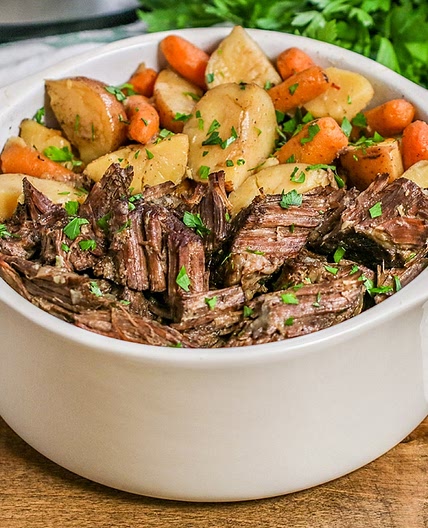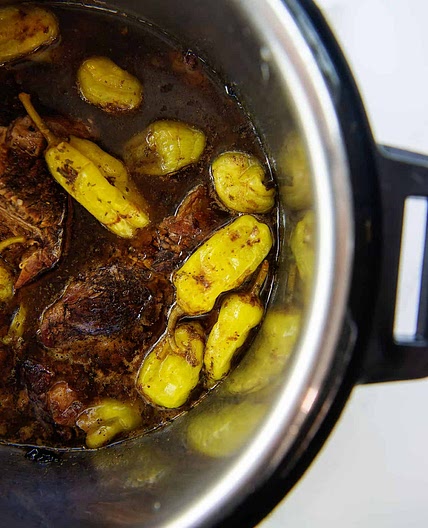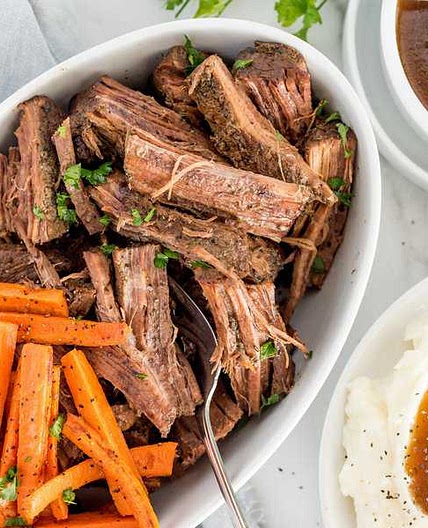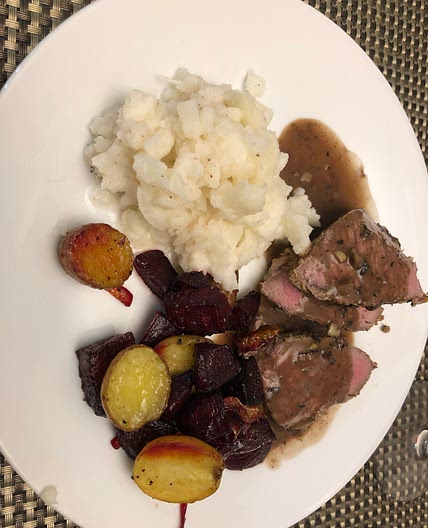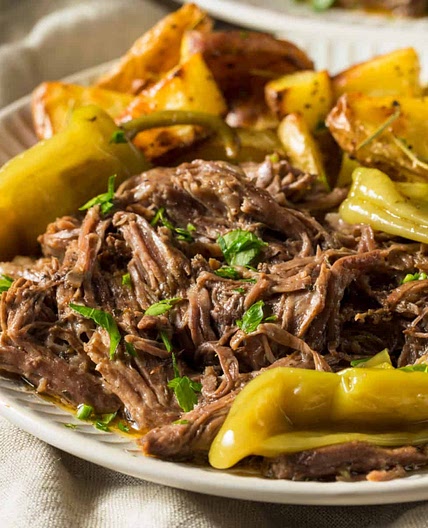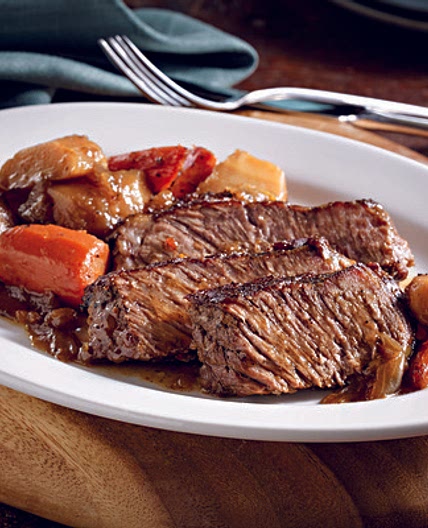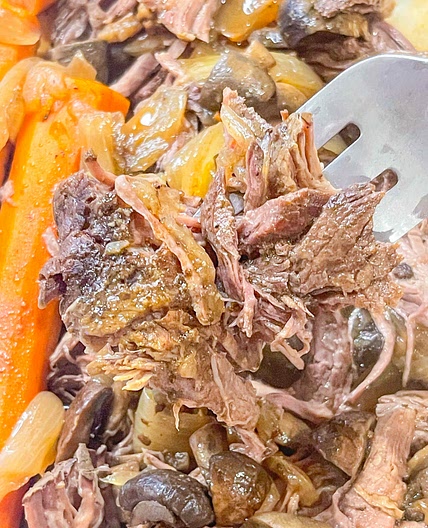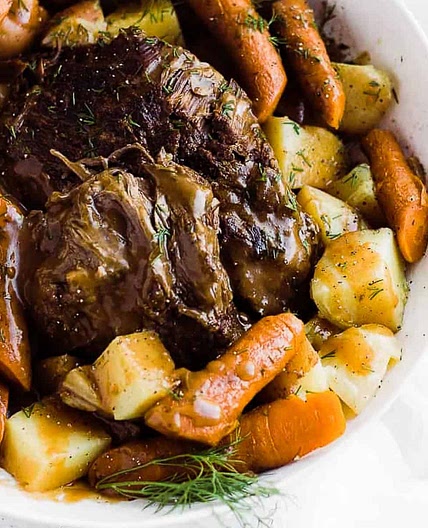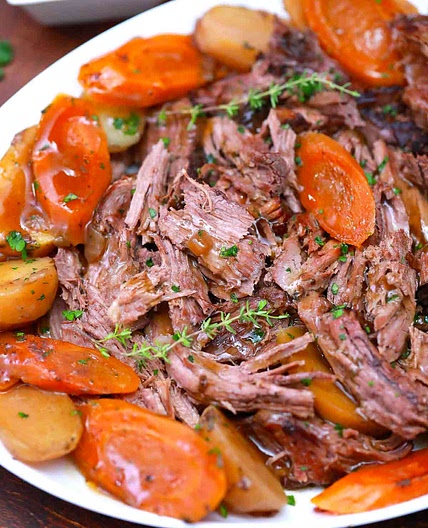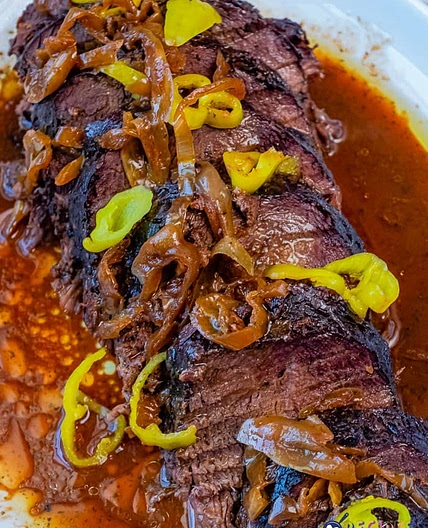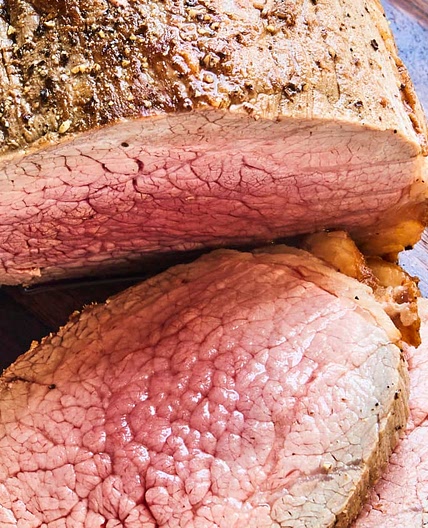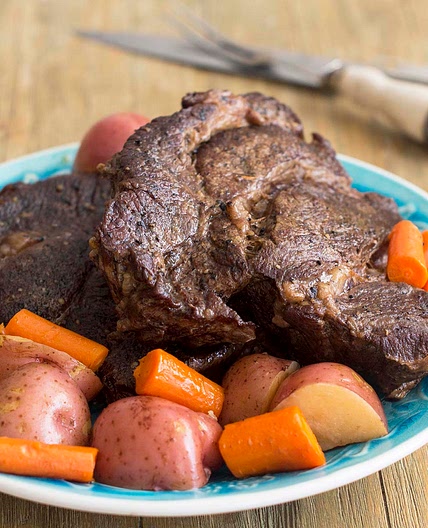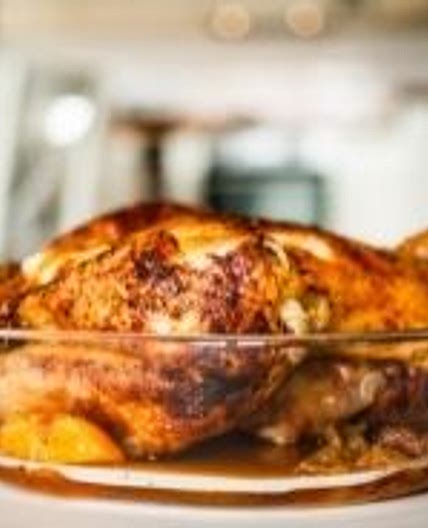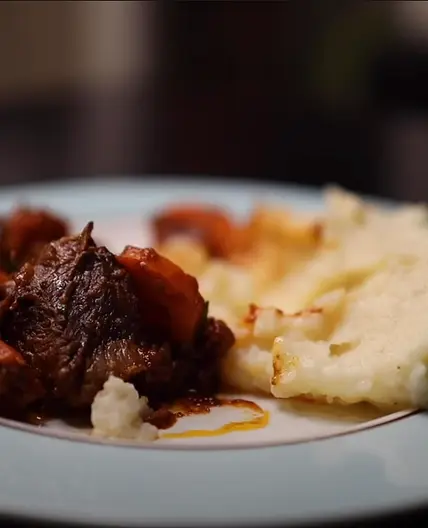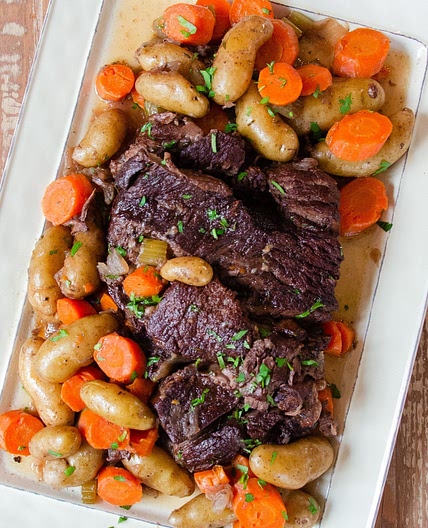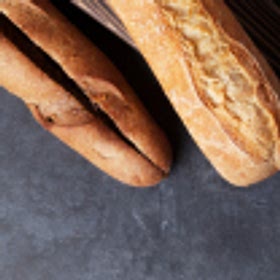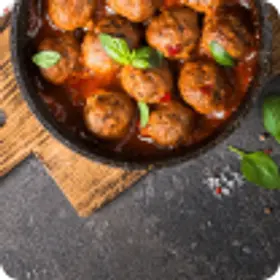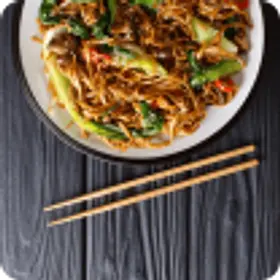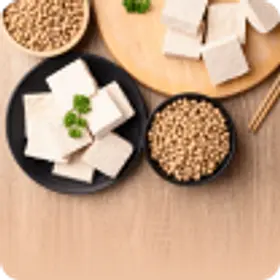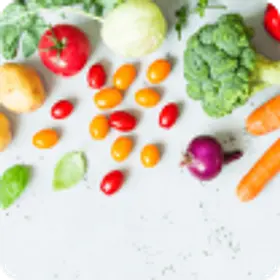Pot Roast: An Easy, Slow-Cooked Staple
Pot roast is tender, flavorful, and sure to impress a dinner party. In this article, you’ll learn about the best cuts of meat, seasoning techniques, cooking methods, and more.Pot roast is tender, flavorful, and sure to impress a dinner party. In this article, you’ll learn about the best cuts of meat, seasoning techniques, cooking methods, and more.
Photo by ThermoPro on Unsplash
Pot roast is a classic comfort food that evokes memories of home-cooked meals and family gatherings. This slow-cooked delight features a tender and succulent cut of meat, infused with rich flavors from aromatic vegetables and a savory braising liquid — with many regional variations on just how to make it.
Whether you’re a seasoned cook or a beginner in the kitchen, mastering the art of the pot roast is within your reach. In this article, we’ll explore the essential steps, share expert tips, and answer frequently asked questions to help you create a mouthwatering pot roast that will have everyone asking for seconds.
The Art of Making the Perfect Pot Roast
The first thing to consider when making a pot roast is what type of meat to use!
When it comes to pot roast, choosing the right cut of meat is crucial. Look for well-marbled and tough cuts that benefit from slow cooking. Beef chuck roast and brisket are excellent choices, as they have ample connective tissue that breaks down during the cooking process, resulting in a melt-in-your-mouth texture.
Searing for Flavor
To achieve a depth of flavor, start by searing the meat. Heat a skillet or Dutch oven over medium-high heat, add a touch of oil, and sear the roast on all sides until it forms a beautiful caramelized crust. This process locks in the juices and adds a rich, savory taste to your pot roast.
Enhancing Flavors with Aromatics
Aromatics are essential ingredients that infuse the pot roast with additional layers of flavor. Add onions, garlic, carrots, celery, spices, and maybe a bay leaf to the pot, allowing them to release their natural sweetness and savory notes as they cook alongside the meat.
Photo by ThermoPro on Unsplash
Braising Liquid for Moisture and Depth
The braising liquid is a key component of a delicious pot roast. Choose a flavorful liquid such as beef broth, red wine, or a combination of both. The liquid keeps the roast moist during the slow cooking process and imparts a robust taste to the meat.
Slow and Steady Wins the Race
Low and slow cooking is the secret to a tender and succulent pot roast. Cover the pot with a tight-fitting lid and transfer it to a preheated oven. Cook the pot roast at a low temperature, around 300°F (150°C), for several hours. This gentle heat allows the connective tissues to break down gradually, resulting in a fork-tender roast.
Vegetables to Complement the Roast
Adding vegetables to the pot roast enhances both the flavor and presentation. About halfway through the cooking time, incorporate vegetables like potatoes, carrots, and onions. These vegetables absorb the savory juices, becoming tender and flavorful accompaniments to the roast.
Checking for Doneness
To ensure your pot roast is perfectly cooked, use a meat thermometer. Aim for an internal temperature of around 125-160°F (52-71°C), depending on how rare you like your beef. This temperature indicates that the connective tissues have fully broken down, resulting in a melt-in-your-mouth texture.
Resting and Serving
Once the pot roast reaches the desired temperature, remove it from the oven and let it rest for a few minutes. This resting period allows the juices to redistribute, ensuring a moist and flavorful roast. Slice the pot roast against the grain to maximize tenderness. Serve with the strained braising liquid as a luscious gravy, or use it as a flavorful base for soups and stews.
FAQs
Can I cook pot roast in a slow cooker instead of the oven?
Absolutely! A slow cooker is a convenient, and sometimes preferred, alternative for making pot roast. Follow the same steps of searing the meat, adding aromatics and liquid, and cooking on low heat. Allow it to simmer for 8-10 hours or on high heat for 4-6 hours until the meat is tender and easily shreds. If you don’t want to wait that long, you could even make Instant Pot pot roast.
How do I prevent my pot roast from drying out?
The key to preventing a dry pot roast is to ensure there is enough liquid during the cooking process. Make sure the liquid partially submerges the meat, and the pot is tightly covered to trap steam. Basting the roast occasionally with the braising liquid also helps to keep it moist.
Can I use other meats besides beef for pot roast?
While beef is the traditional choice, you can adapt the recipe to other meats like pork or lamb. Adjust the cooking time and temperature according to the specific meat you choose.
Can I prepare pot roast in advance?
Pot roast actually tastes even better when prepared in advance. The flavors continue to meld and intensify when allowed to sit overnight. Simply cool the cooked roast, store it in the braising liquid, and refrigerate. Reheat it gently on the stovetop or in the oven before serving.
What are some side dishes that pair well with pot roast?
Pot roast pairs beautifully with a variety of side dishes. Mashed potatoes, roasted vegetables, buttered noodles, or crusty bread are all excellent options. The rich and savory flavors of the pot roast complement these sides, creating a satisfying and comforting meal.
